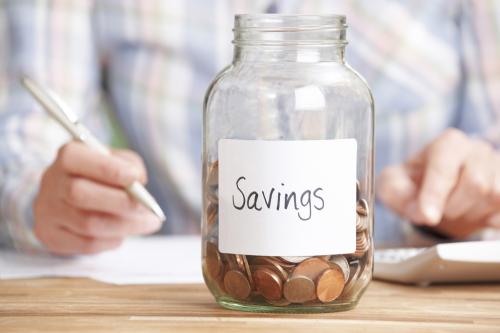


Settle on a sum
The usual rule of thumb for emergency savings pots is to have a minimum of three months living expenses put aside. To arrive at this figure, calculate how much your monthly spend tends to be, including things like rent or mortgage payments, utility bills, groceries, transportation or childcare costs.
If you want to be extra cautious, you may want to aim for a longer period, such as six months.
Plan of action
Set parameters that detail under which circumstances the money can be used, for example, unforeseen dental expenses, a broken washing machine, unexpected car bill or if you’ve lost your job. Establishing these at the outset means that you won’t be tempted to dip into these funds for costs that fall outside of this.
Looking at the amount that you have in mind to save, try and work backwards from this point to establish how long it will take for you to meet your goal amount. Designating a separate savings account entirely for this purpose, so that you aren’t tempted to touch the money is crucial here too.
Small steps
Beginning with smaller sized, regular contributions means that you can start building your pot in a sustainable manner that you’re more likely to stick and commit to. Look at your incomings and outgoings and compare with your emergency fund goal, then work from there to determine how much you can feasibly afford to save for this.
Picking the right account
It's important that having worked so hard to stash this money away to form the basis of your emergency fund that you can then access it swiftly during a crisis scenario. The funds would be best housed in an Easy Access account, such as the RCI Bank Freedom Savings Account, which has no penalties, fees or notice periods. This means that when you need to get a hold of your emergency funds, you can do so immediately. Equally, this means that you don’t need to compromise on receiving a rewarding rate, as this account still provides a competitive interest whilst it grows.
Maintenance is key
Once the fund is built, it’s a good idea to regularly check in on whether what you have saved for emergencies is still fit for purpose. As your lifestyle changes, your monthly outgoings may also change, meaning the amount you had stashed away could no longer be sufficient. Similarly, if you have had to dip into the funds, you may need to replenish them to cover any potential shortfall.
Of course, the hope is that you don’t encounter any emergencies which means you have to dip into these funds. But resting safe in the knowledge that you have these savings on standby to help get you through testing times will afford you peace of mind if the worst does happen.



